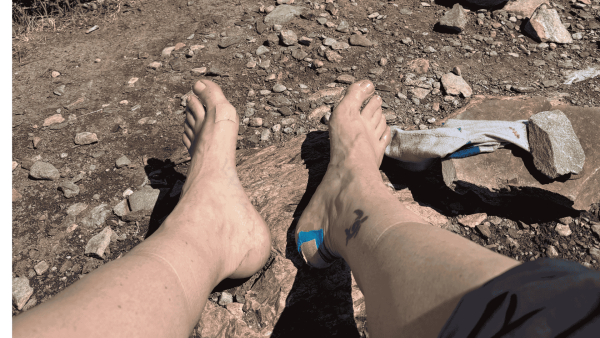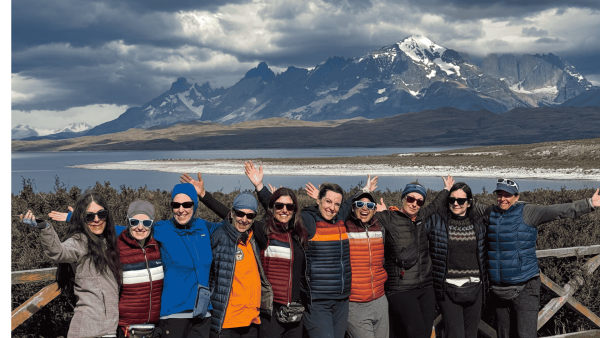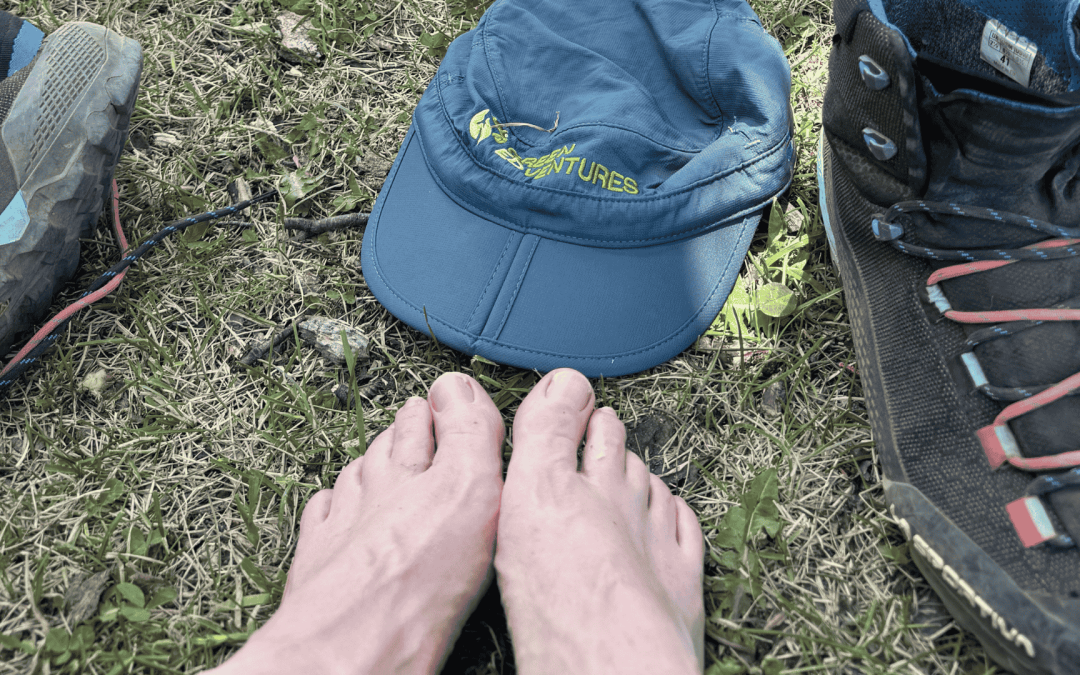Blisters can turn even the most breathtaking hiking experience into a painful ordeal. I learned this firsthand during my epic 70-mile trek on the “O” Circuit in Patagonia’s Torres del Paine National Park. The jaw-dropping scenery of glacial peaks, vast valleys, and pristine lakes was unforgettable—but so were the blisters that slowed me down and made every step a challenge.
Foot care, specifically blister prevention and care, is often an afterthought for hikers, but I’ll never overlook it again. Here’s how I learned to care for my feet, tie my boots effectively, and prepare for long hikes—and how you can, too.

My feet after 30 miles. I ran out of blister care. Thank goodness my team and guides had extra to spare for the next 30 miles!
Blister Prevention and Care Starts Before You Hit the Trail
Your feet are the foundation of your journey, and proper preparation is critical. Here’s how I now approach foot care with blister prevention and care as my top priority:
1. Break In Your Boots
On my Patagonia trek, I realized my boots and I weren’t as “in sync” as I thought. Whether your boots are brand-new or well-worn, always break them in before a big hike. Wear them on short walks, day hikes, or even around the house for a few weeks to ensure they fit properly and your feet adapt.
2. Toughen Up Your Feet
Blisters often form on soft, unconditioned skin. Regular walks and short hikes can help build calluses, which act as natural armor against friction. I hadn’t hiked much before Patagonia, and my soft feet paid the price. Consider this part of your pre-hike training.
3. Choose the Right Socks
Socks play a huge role in blister prevention. I now swear by merino wool sock liners under my hiking socks to reduce friction and wick away moisture. Keeping your feet dry is key to avoiding blisters. I forgot to bring my Injini toe sock liners that I love!
How to Tie Your Boots for Blister-Free Hiking
Improperly tied boots were another rookie mistake I made. During my trek, I learned the importance of securing my boots properly. Here’s how to do it:
- Secure Your Heel: Place your foot in the boot and tap your heel back until it’s snug against the rear. This minimizes movement and prevents unnecessary friction.
- Tie a Heel Lock: After lacing through the eyelets, create a “heel lock” by looping the laces back through the top hooks or eyelets. Pull the laces snugly to keep your heel in place and prevent your foot from sliding forward.
- Find the Perfect Fit: Your boots should feel secure but not overly tight. Ensure there are no pressure points, and that your toes have a little wiggle room to prevent pinching or rubbing.
On-Trail Tips for Blister Prevention and Care
Once you’re on the trail, blister prevention and care doesn’t stop. Friction and moisture are your two biggest enemies, so take these steps to stay ahead of problems:
1. Keep Feet Dry
Sprinkle foot powder (like Gold Bond) in your socks to reduce moisture. Opt for breathable, moisture-wicking socks for hot weather or insulated ones for colder conditions.
2. Carry a Foot Care Kit
My trail kit now includes essentials for blister prevention and care, such as:
- Moleskin or Compeed for hotspots.
- KT tape for support.
- Gauze for padding.
- Foot powder for moisture control.
- Toe lubrication like Compeed Anti-Friction
- Scissors to trim tape or moleskin.
- Extra socks for emergencies.
Stopping to treat a hotspot early can make the difference between a small annoyance and a major setback.
3. Listen to Your Feet
Don’t ignore discomfort. During my trek, I learned the hard way that a small irritation can quickly escalate. Take breaks to air out your feet, change socks if they’re damp, and re-tie your boots if they feel loose.
Lessons Learned: Blister Prevention and Care
Reflecting on my Patagonia adventure, I realized that blister prevention and care is as vital as physical fitness or proper gear. I’ve since prioritized foot preparation for every hike. By breaking in boots, toughening up your feet, mastering boot lacing techniques, and being proactive about foot care on the trail, you can avoid painful mistakes and enjoy your journey to the fullest.
Whether you’re embarking on your first multi-day hike or preparing for a bucket-list trek, take it from me: your feet will thank you. Blister prevention and care aren’t just about avoiding pain—they’re about maximizing your time in nature and ensuring every step is a joy.



